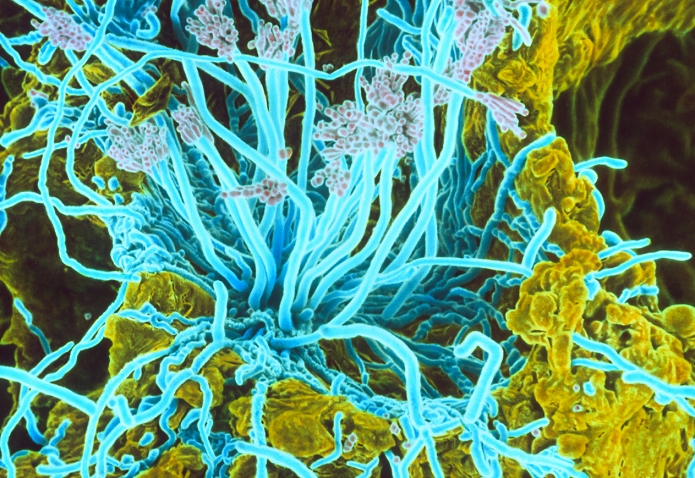
ED
A type of blue-green mold (Date of photograph unknown)
Penicillium on bread. Coloured scanning electron micrograph (SEM) of the hyphae and fruiting bodies of the fungus Penicillium sp. seen growing as mould on bread. The fruiting bodies, known as conidia, are tuft-like clusters at the tips of the thread-like hyphae. These contain rounded spores strung together in chains. Once ripe each spore can germinate into a new fungus. Species of Penicillium are the source of the antibiotic penicillin. Magnification: x194 at 5x7cm size. Magnification; x680 at 8x10 ins size.
Details
ID
10573605
Collection
License type
Editorial
Photographer
Creation date
15-11-2010
Contact Aflo for all commercial uses.

More
Top Categories
